Korean-style grilled mackerel delivers smoky, crispy skin and juicy, tender flesh. Using the parchment paper method, you can effortlessly eliminate unwanted fish odors.
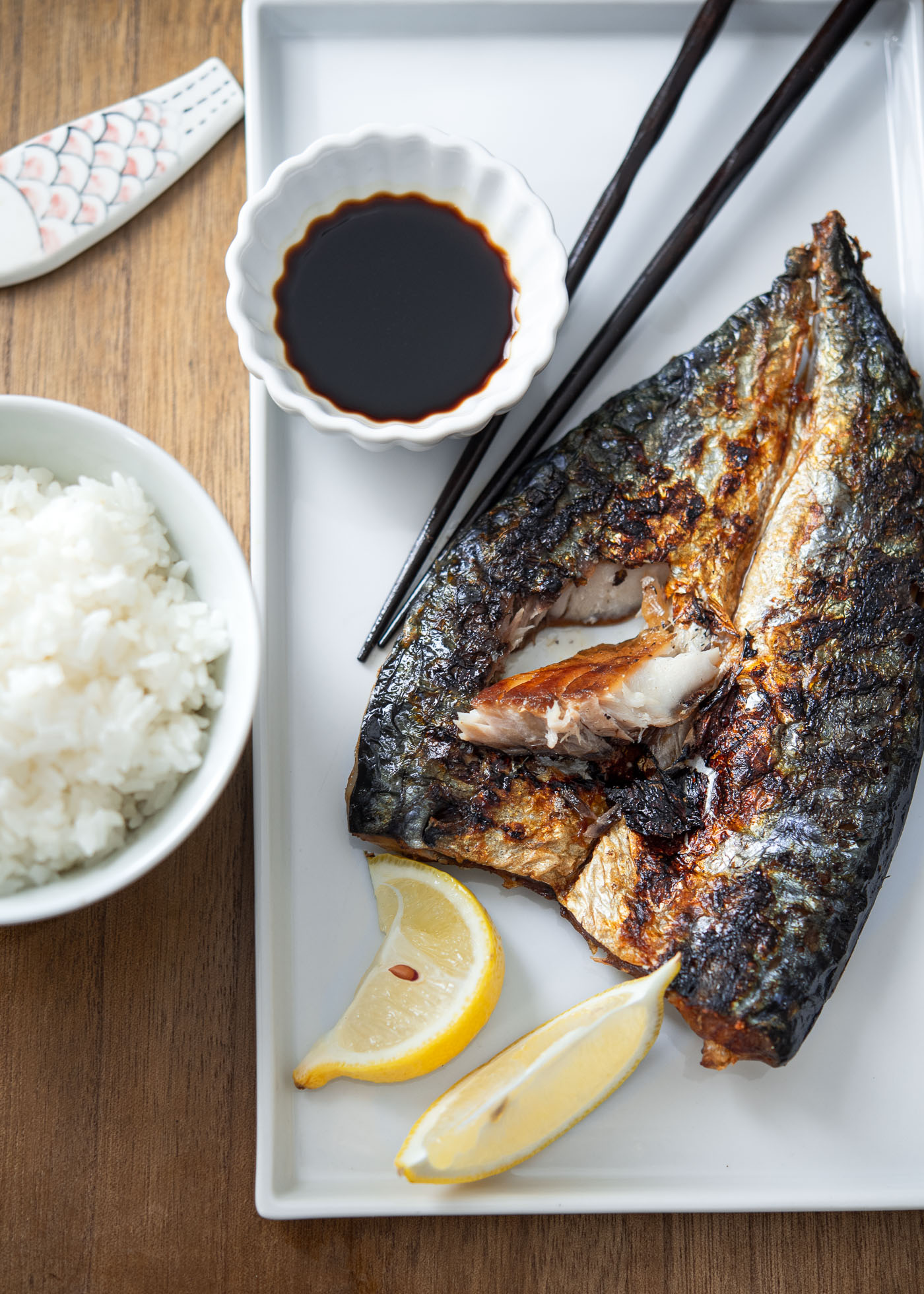

Growing up in a small fishing town at the southern tip of South Korea, grilled fish was a regular on our dinner table—and sometimes even for breakfast. Fish for breakfast? I know it sounds odd, but it was a common menu item back then.
There’s a little hole-in-the-wall grilled fish restaurant in a narrow alley in the area of Seoul where I live. They serve grilled mackerel (godeungeo gui, 고등어구이) over hot charcoals on a small wire rack.
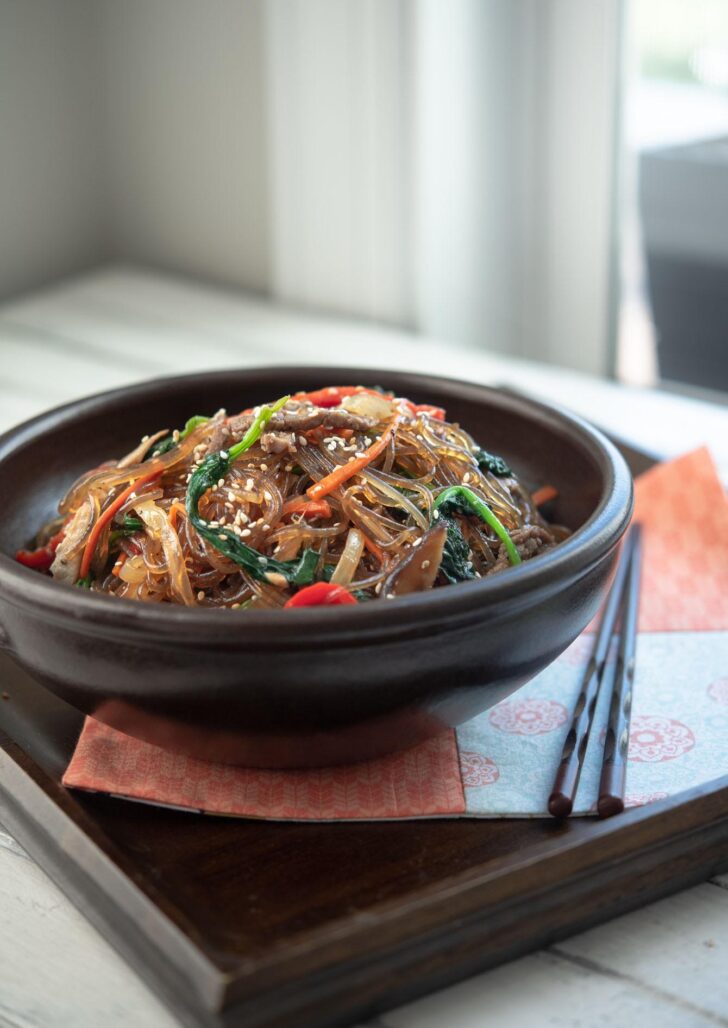

Get new recipes via email:
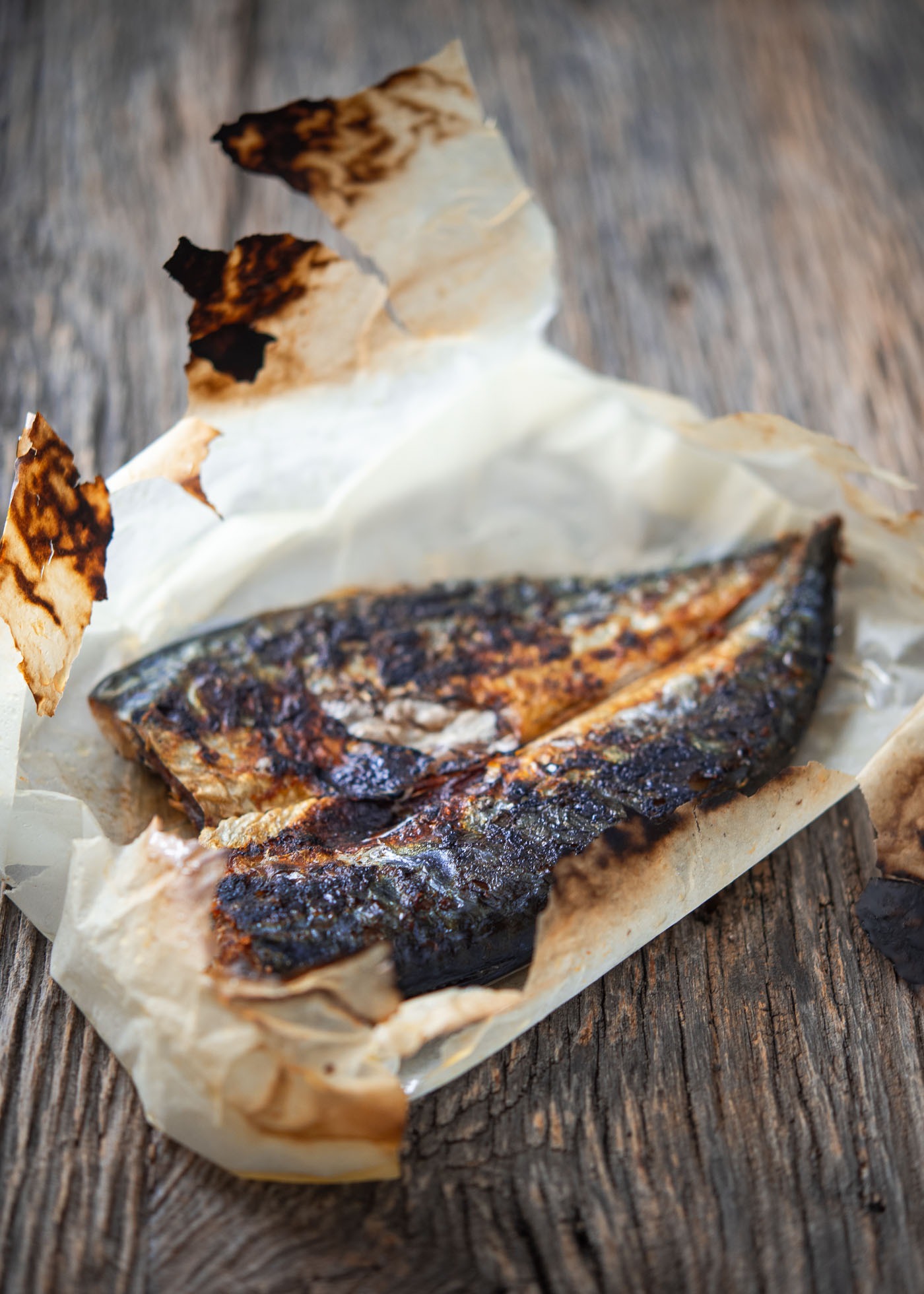

An old lady and her son run the charming place, and I visit at least once a month when I crave the crispy skin of Korean grilled fish in a homestyle setting. As you know, grilling mackerel indoors can be tricky because of the lingering fish odor.
But when the craving hits, you gotta satisfy it, right? Luckily I have a neighborhood restaurant that I can rely on, but if you don’t? Here’s my solution—using parchment paper.
My recipe for Korean grilled mackerel lets you enjoy smoky, crispy-skinned, slightly charred mackerel without worrying about the fish smell in your kitchen. You’ll always get moist fish inside.
You’ll be pleasantly surprised by the ease of parchment cooking method, which you can use for virtually any fish you want to cook. Mackerel is affordable and packed with omega-3s. Enjoy this healthy recipe, or try my Korean BBQ mackerel (gogalbi) if you want to spice it up further.
Choosing Fresh Mackerel
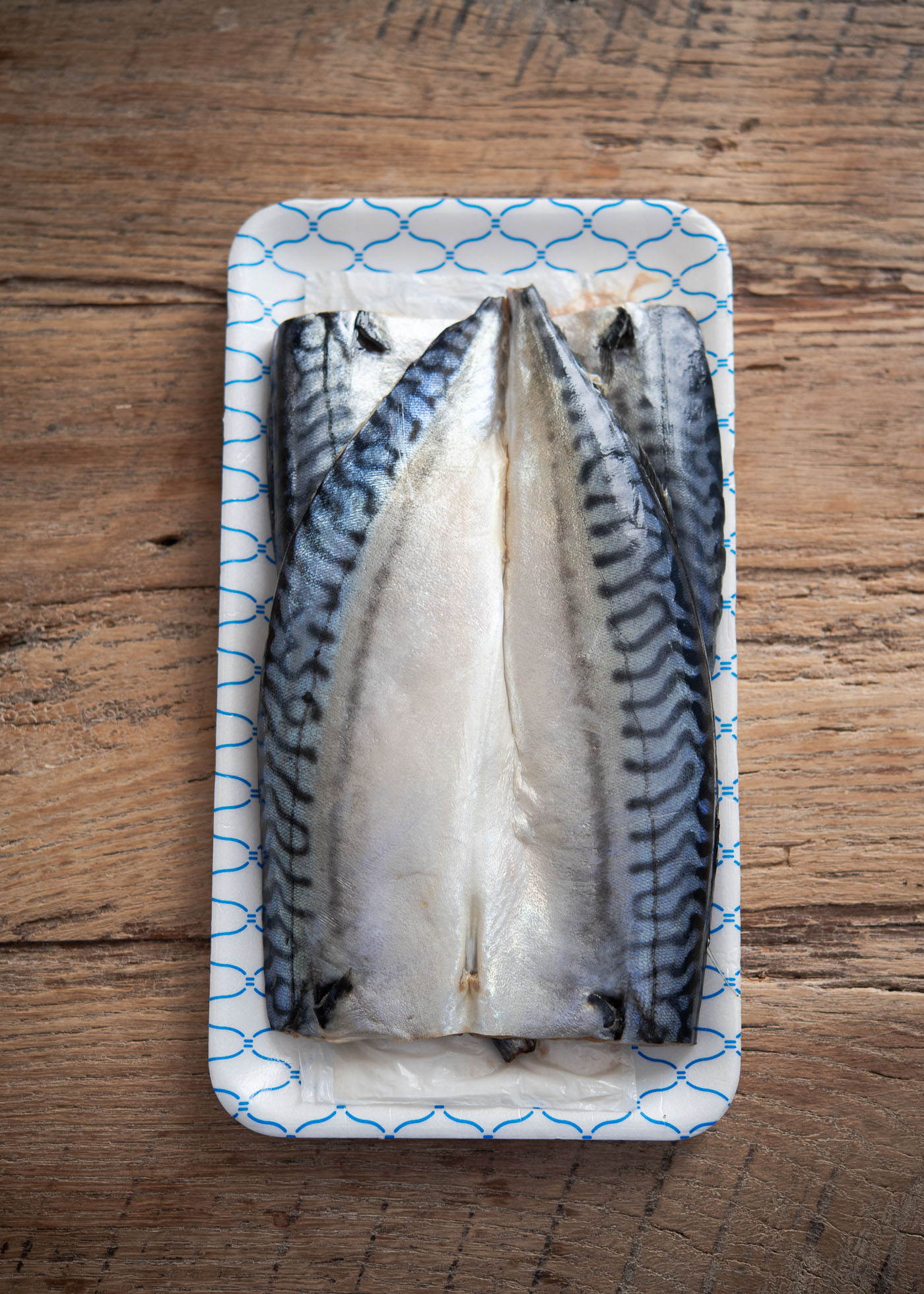

When selecting fresh mackerel, consider the following:
- Firm Flesh: The flesh should be firm and should spring back when pressed gently.
- Clean, Shimmering Skin: Look for mackerel with clean and gleaming skin, free from any blemishes or discolorations.
- Bright Eyes: Fresh mackerel should have clear, bright eyes. Avoid those with cloudy or sunken eyes.
- Retain the Skin: When getting your mackerel cleaned and filleted, ask the butcher to keep the skin on. The skin helps maintain moisture during cooking and contributes to the smoky flavor.
Salted Mackerel
In Korean cuisinefresh mackerel is often salted before grilling to add flavor and preserve the fish for a longer period. This simple but effective step is optional but highly recommended.
To do this, start by cleaning and filleting your mackerel, then sprinkle a generous amount of kosher or sea salt over it and let it marinate for 10-15 minutes. Once done, you can freeze the fish for up to 3 months, ready for your next meal or grilling session.
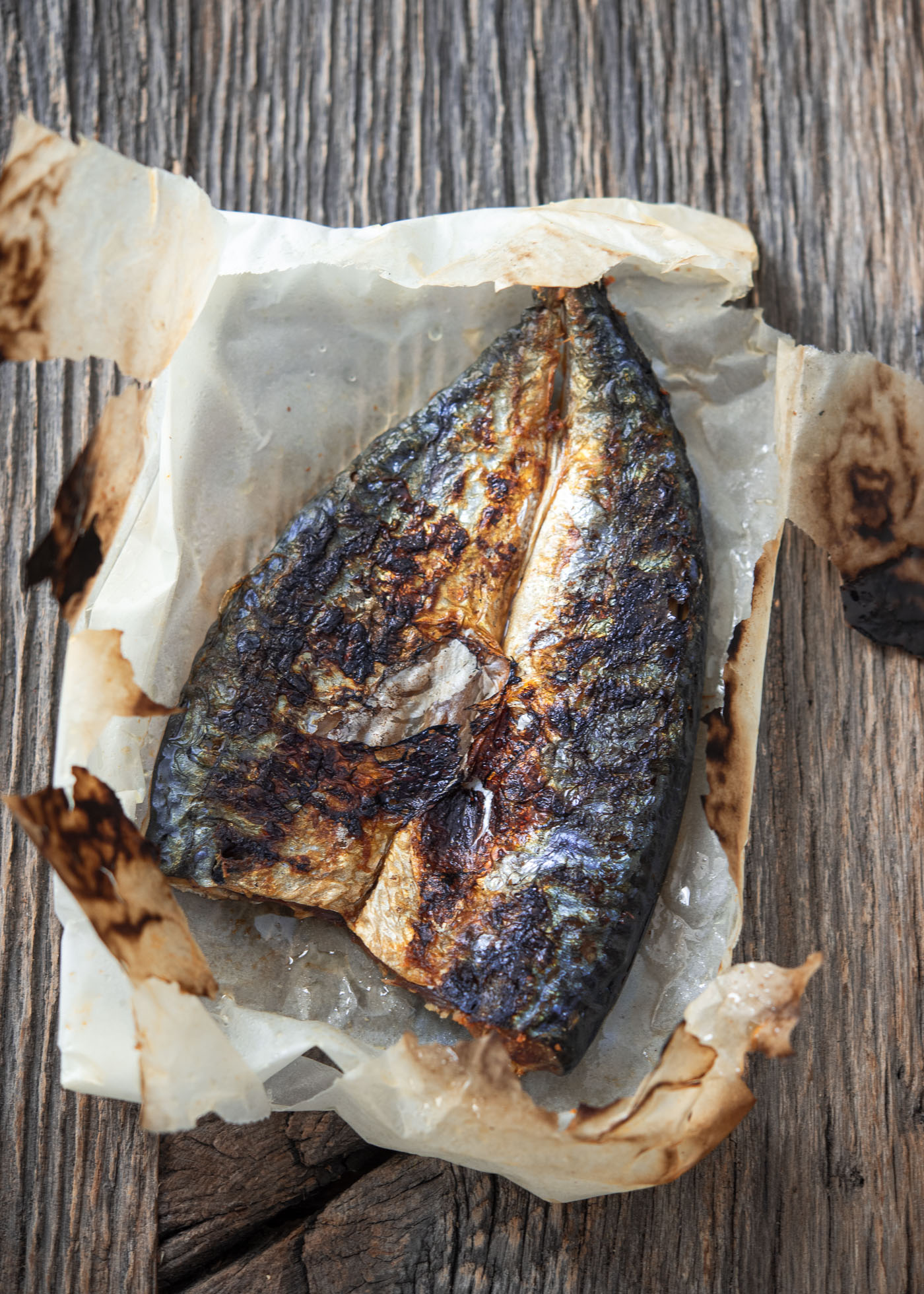

Cooking Tips
Here I give you a few tips to reduce or even eliminate the fish odor so that you can enjoy this amazing fish without stressing about getting rid of the smell in the kitchen.
- Use rice water to soak the fish for 10 minutes. This is a good method especially if you are using the heavily salted mackerel that are sold in stores. Soaking helps to get rid of some of the extreme saltiness. It also helps reduce the fish odor. (You can skip this process if using fresh mackerel.)
- Use vinegar. Brush mackerel fillets with a small amount of vinegar. It firms up the flesh and makes the fish more enjoyable. Don’t worry, you won’t taste the vinegar at all.
- Use parchment paper. It not only locks in the moisture within your mackerel, it also seals the smell from sneaking outside. Once cooking is finished, the fish odor is gone and you will be surprised at the outcome–perfect-looking grilled mackerel.
How to Grill Mackerel in Parchment
Soak Mackerel in Rice Water
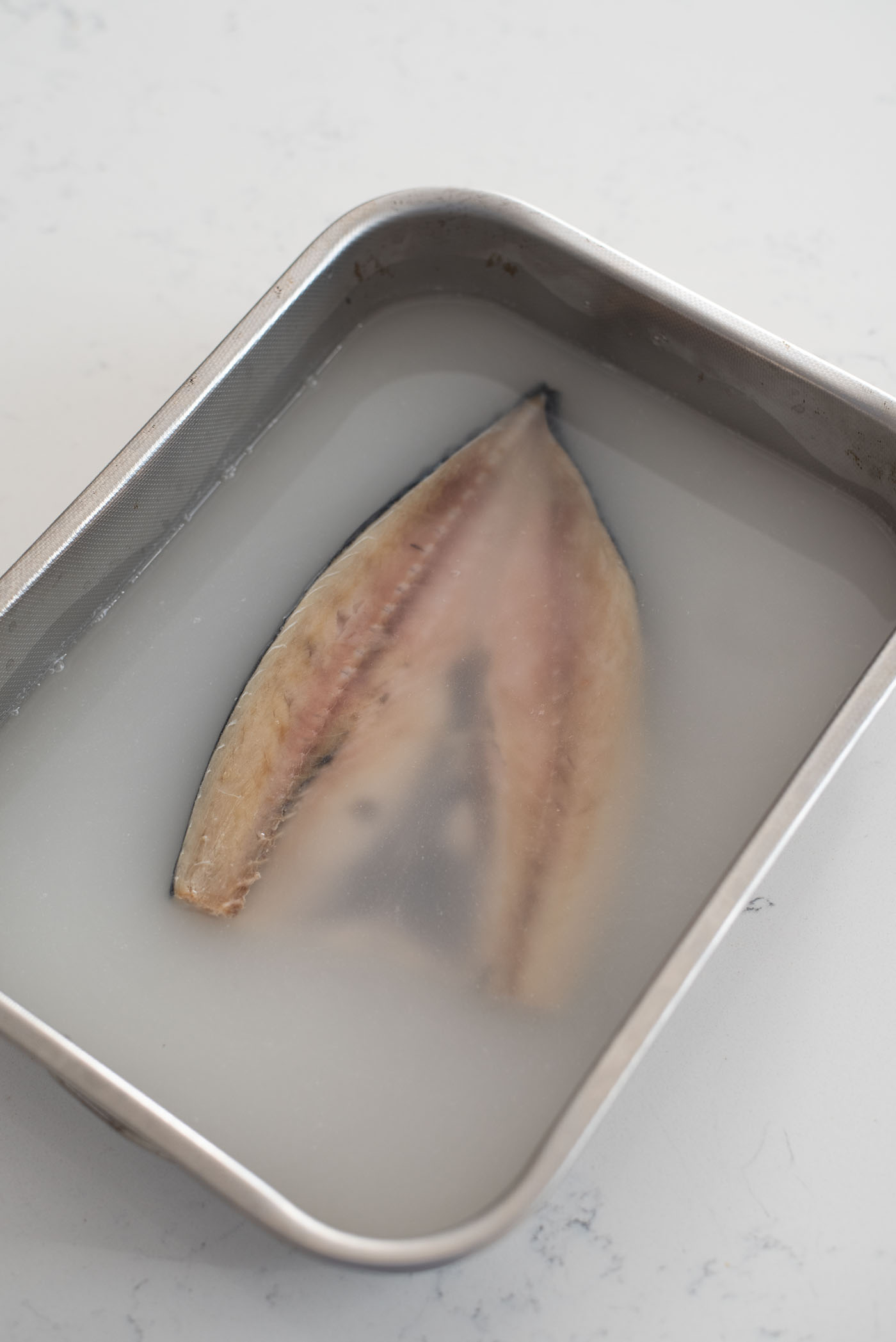

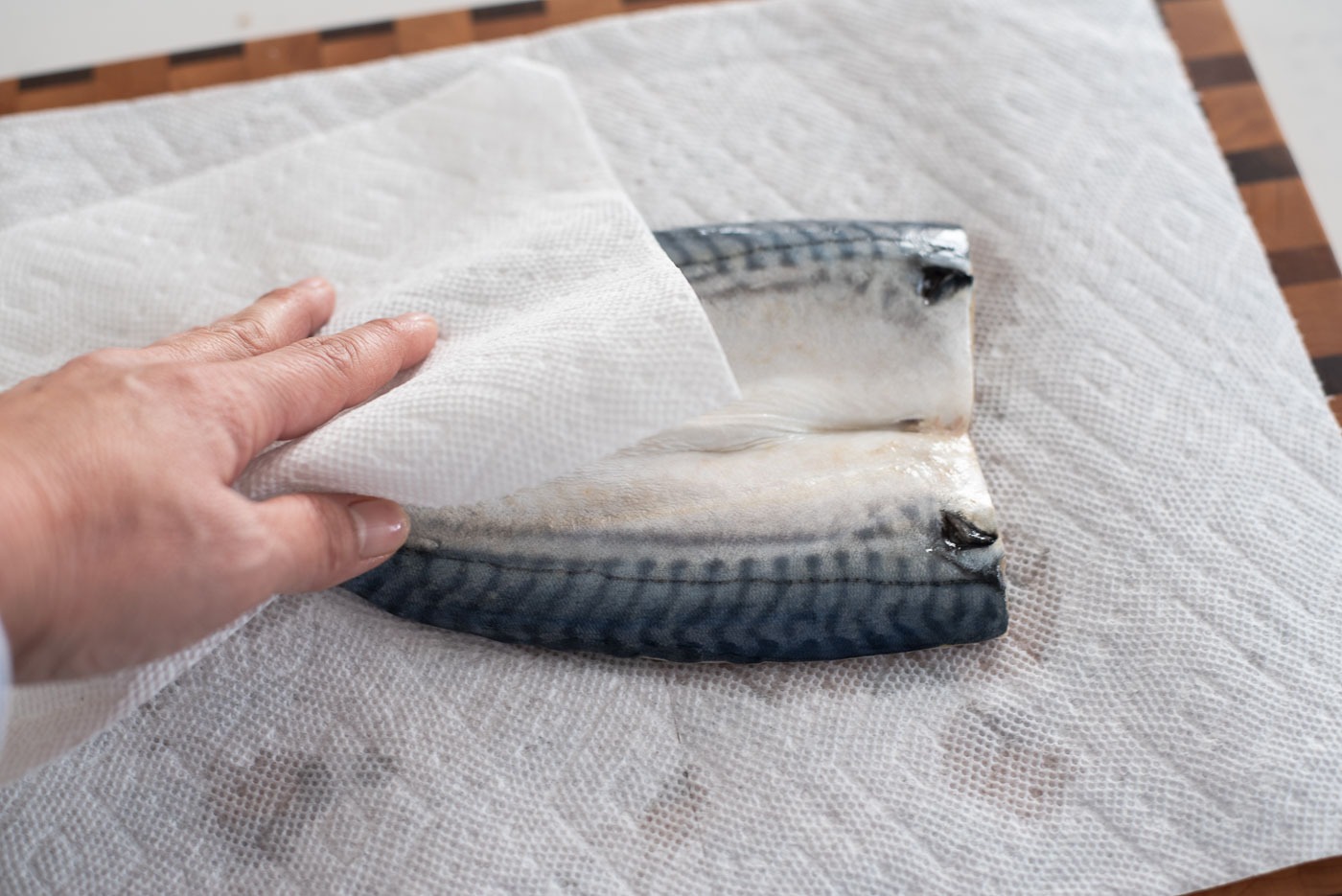

- If using an already salted mackerel fish, soak it in rice water for 10 minutes to reduce some of the saltiness.
- If using fresh fish, soak for 5 minutes or skip this step.
- Take the fish out of the water and dry completely with a paper towel.
Prep in Parchment Paper
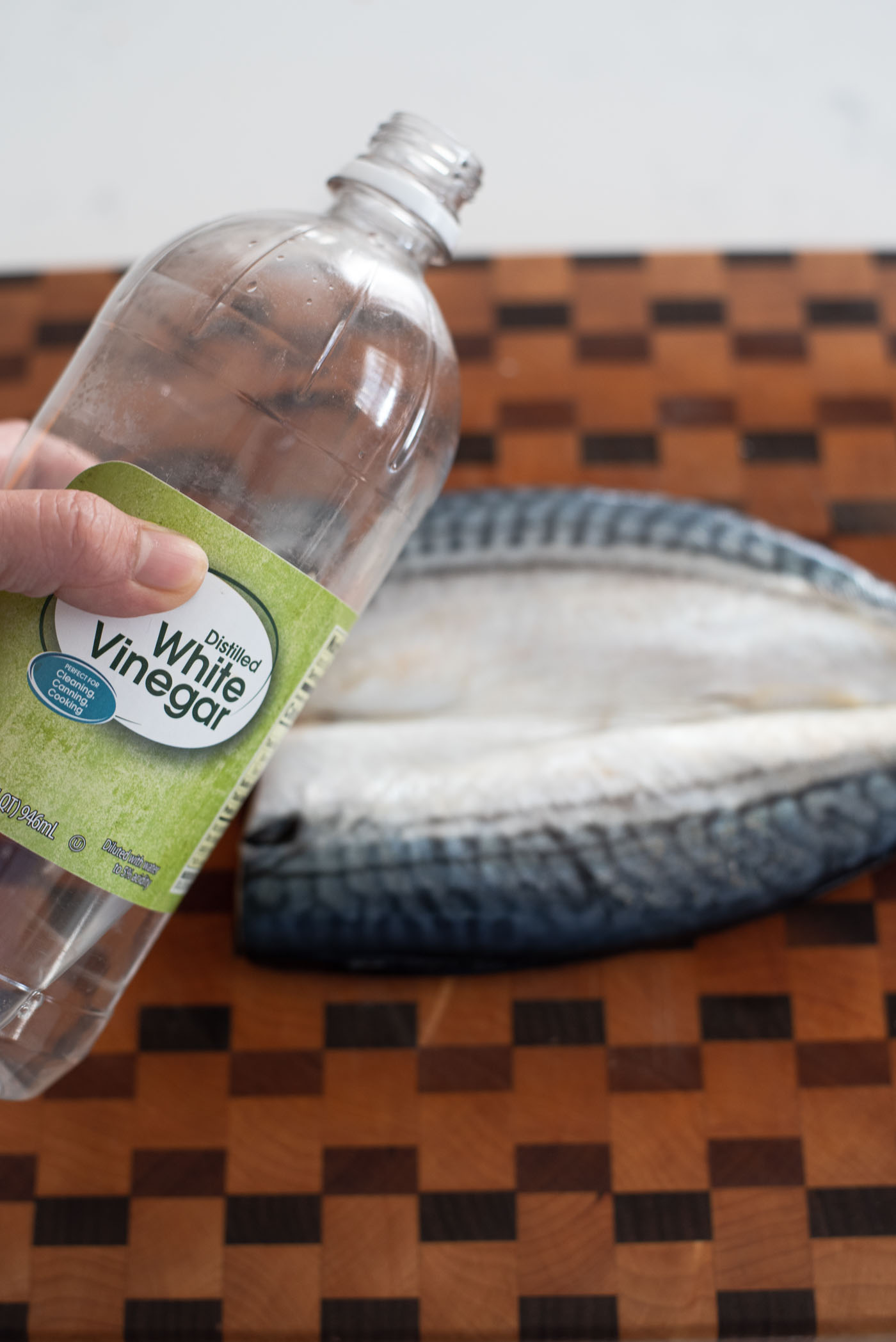

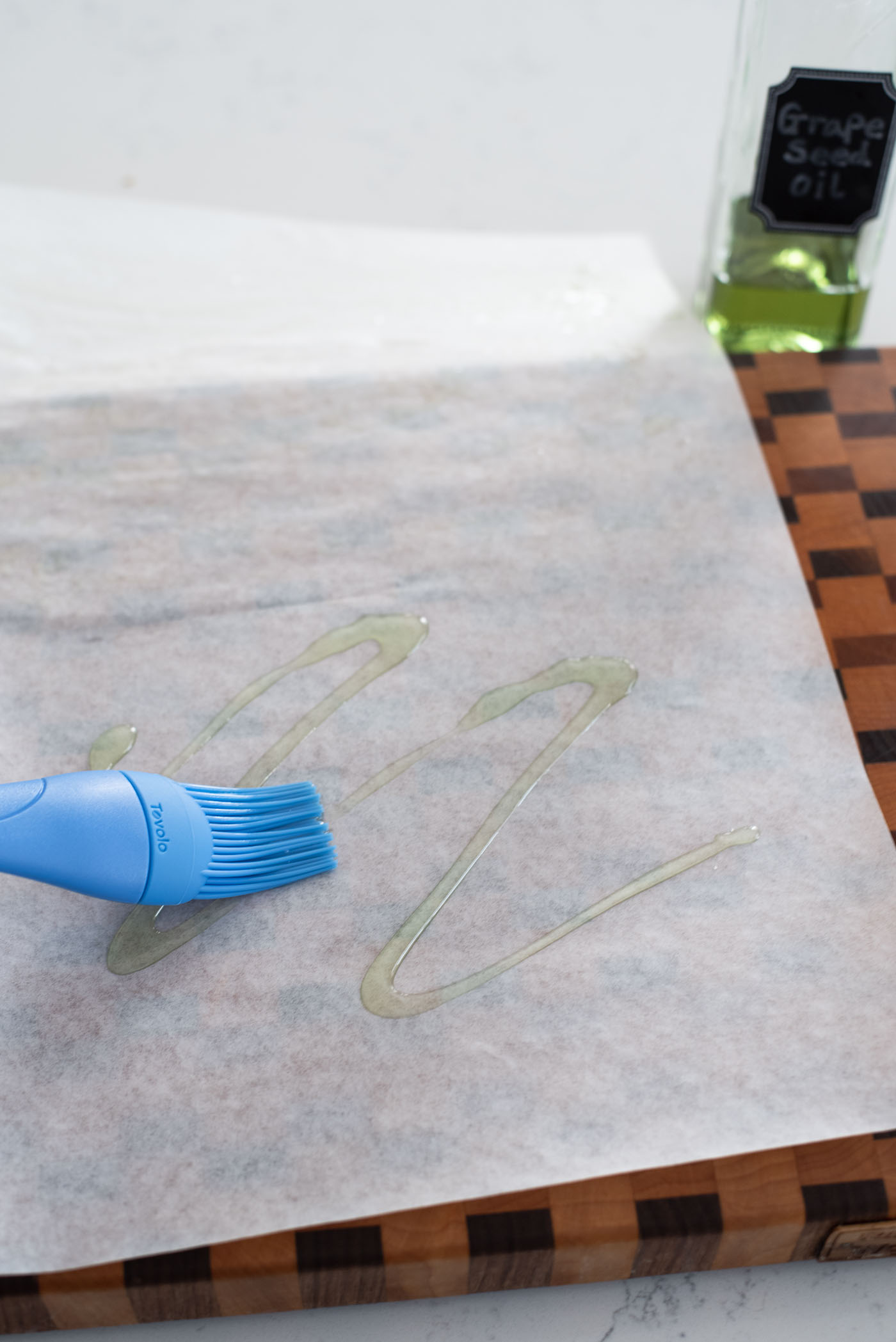

- Apply a thin coat of vinegar (about 1 teaspoon) on both sides of the mackerel flesh and skin.
- Brush a piece of parchment paper with some oil.
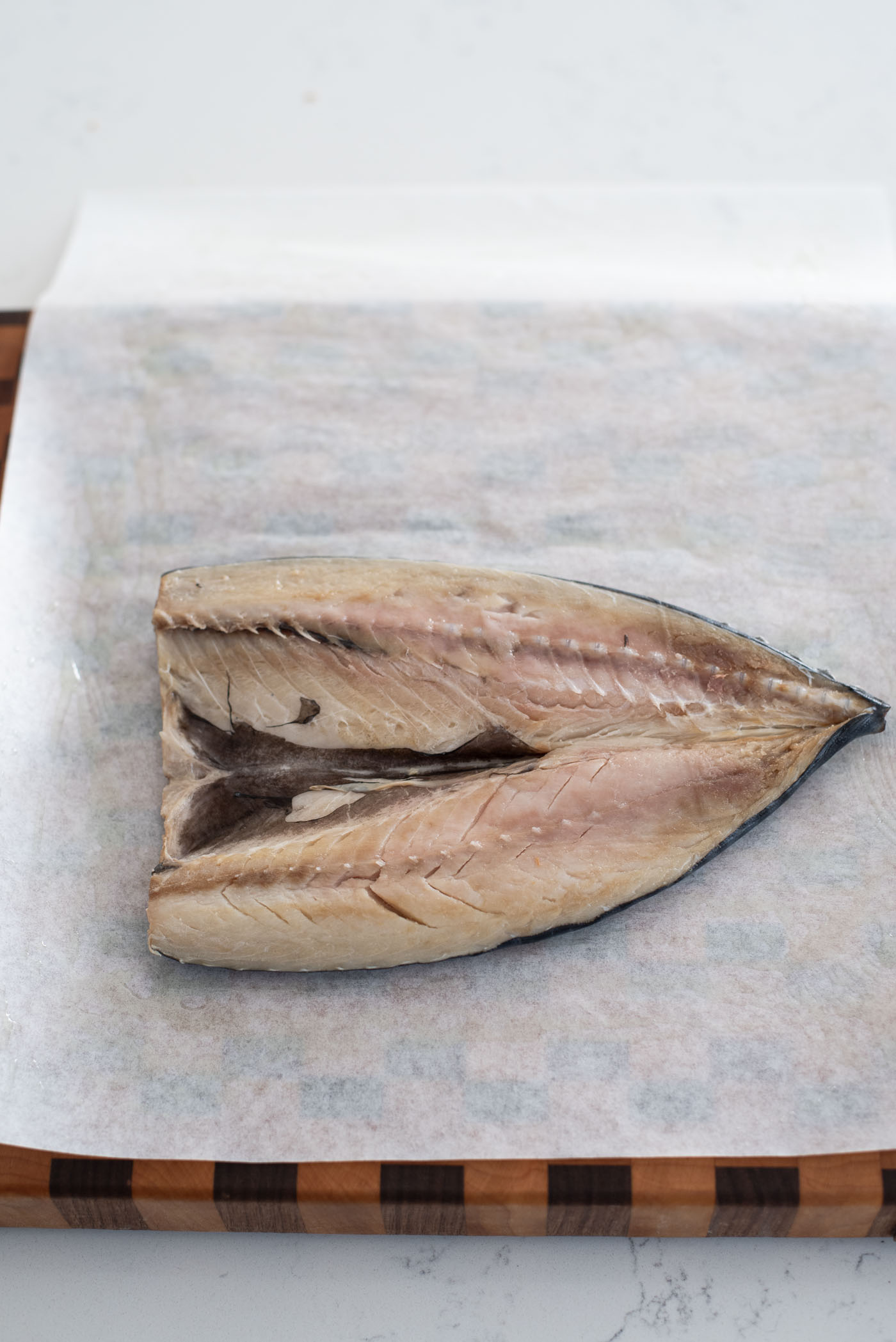

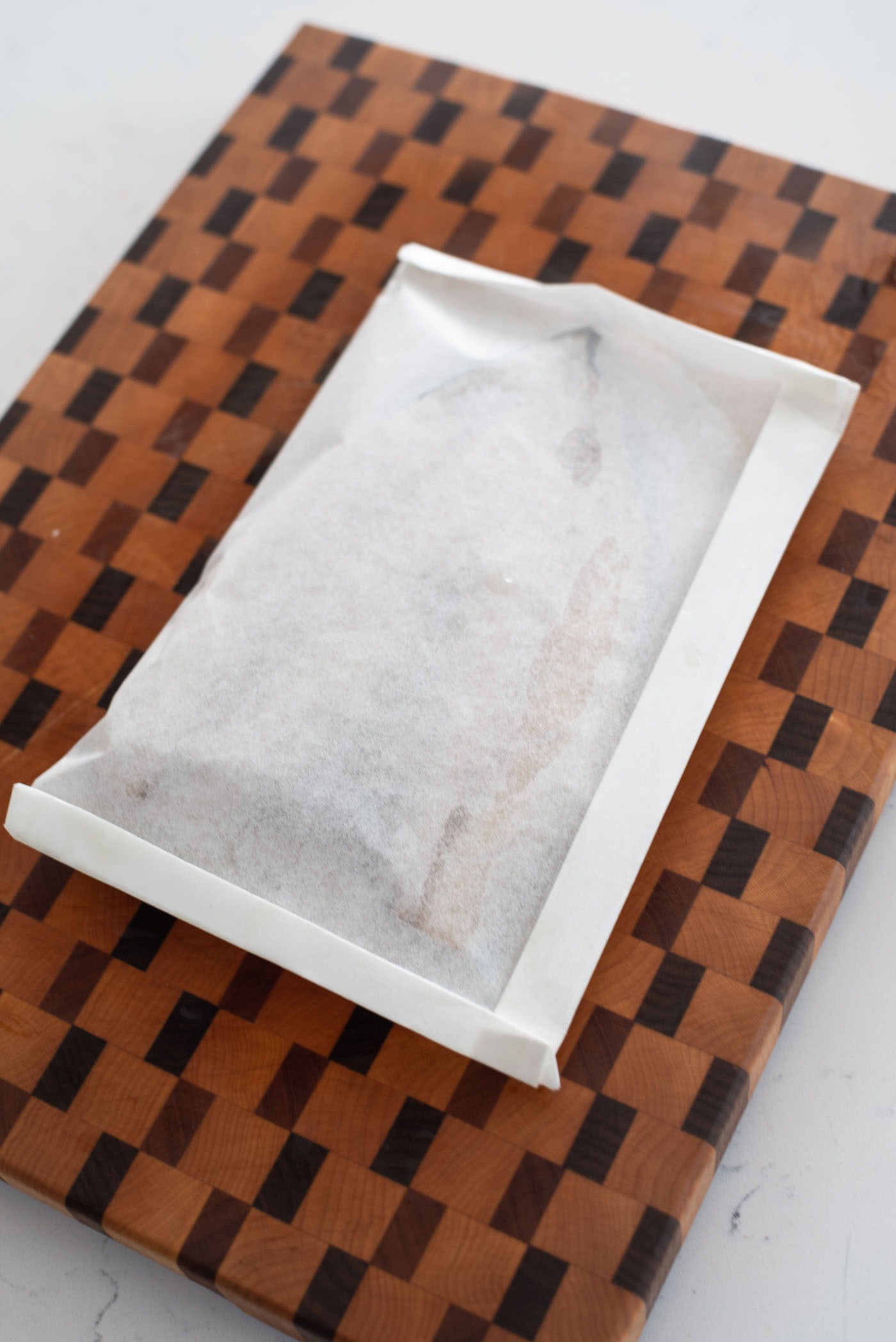

- Place the mackerel fillet in the parchment paper and fold it over the fish.
- Fold the sides of paper twice to make a pouch and seal the fish inside.
Cook Mackerel in Parchment
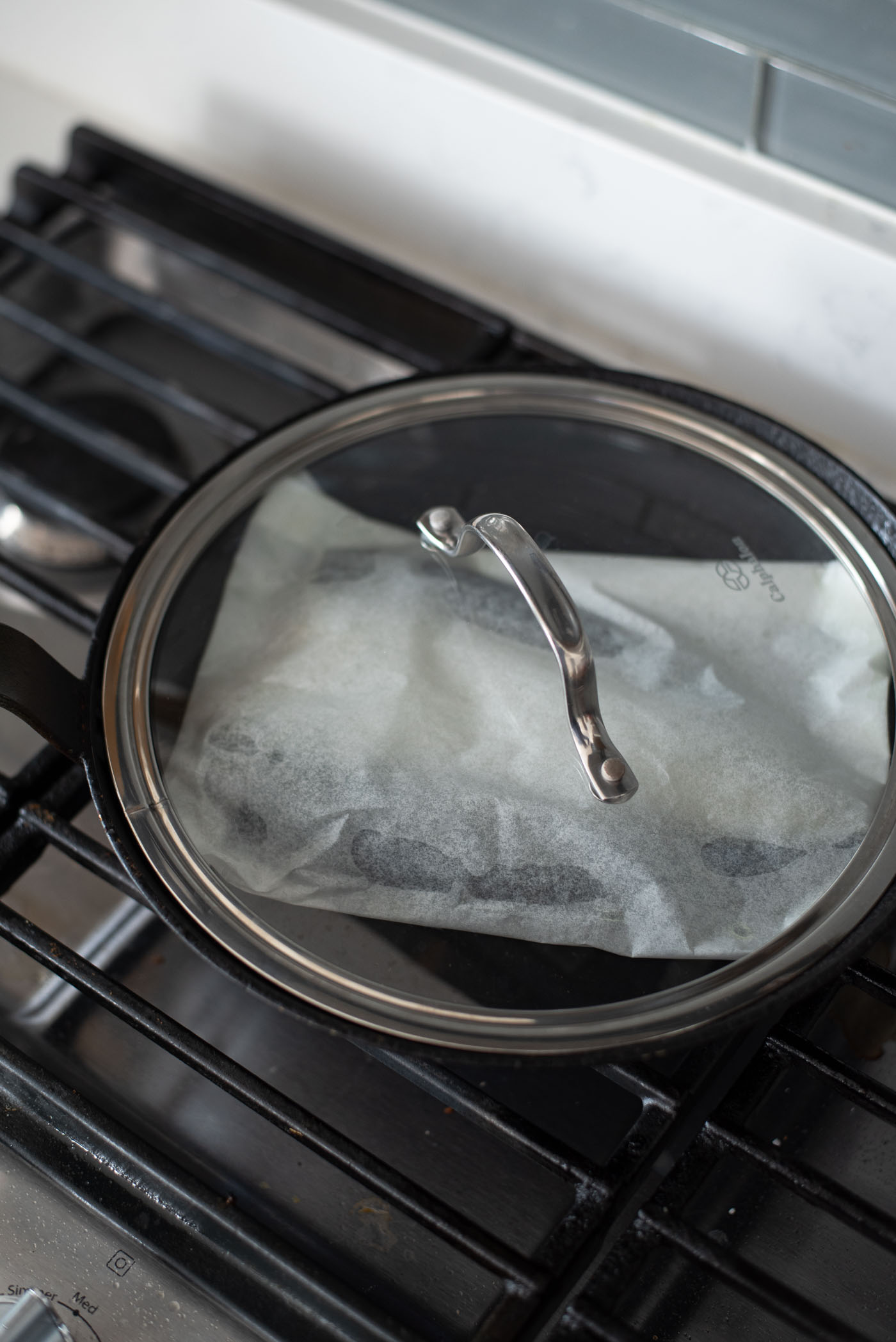

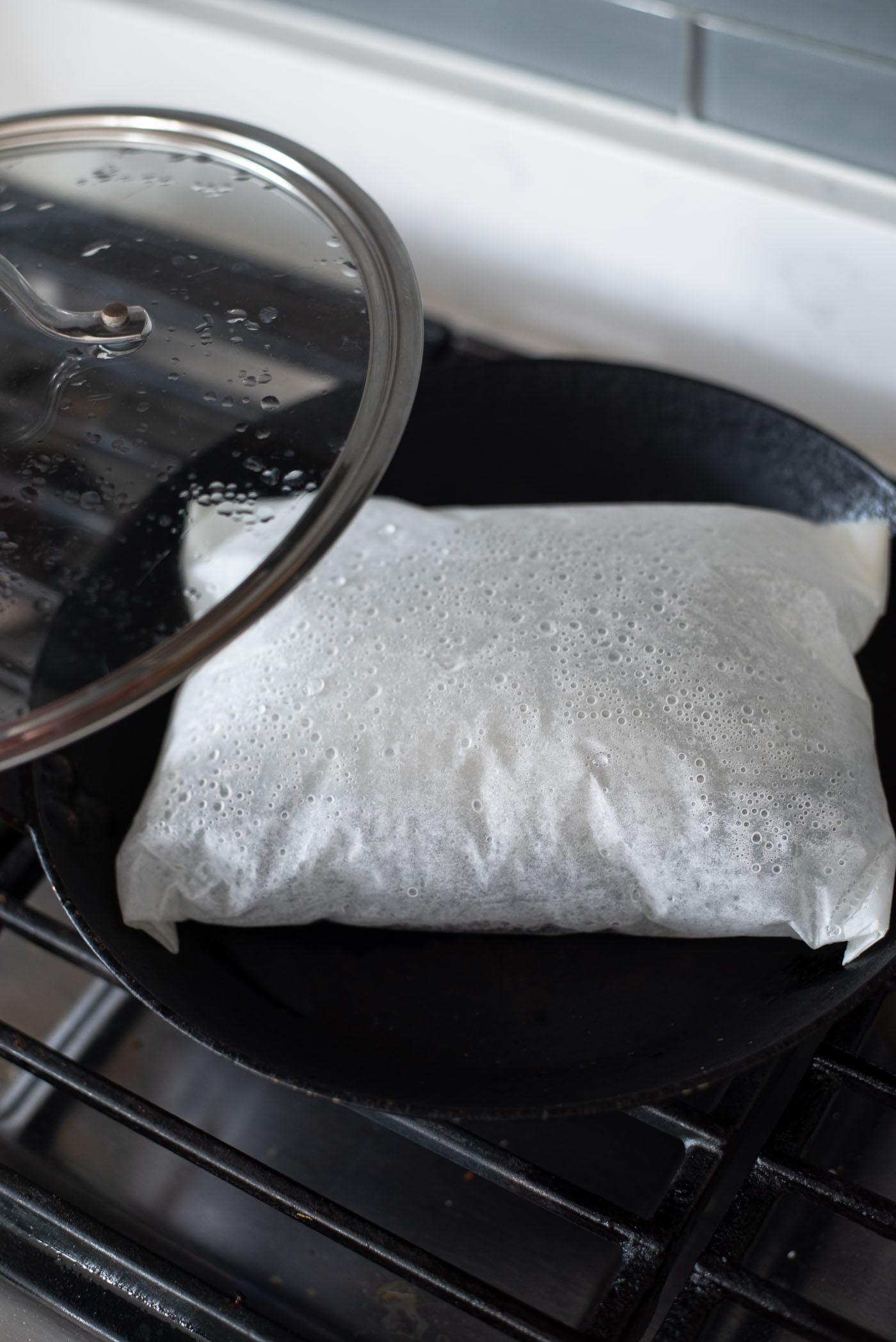

- Place the pouch, folded side down, in a large pan over medium low heat and cover with a lid, cook for 6-7 minutes.
- When you see the pouch is puffing high, turn the pouch to the other side carefully so that the fish will stay flat inside.
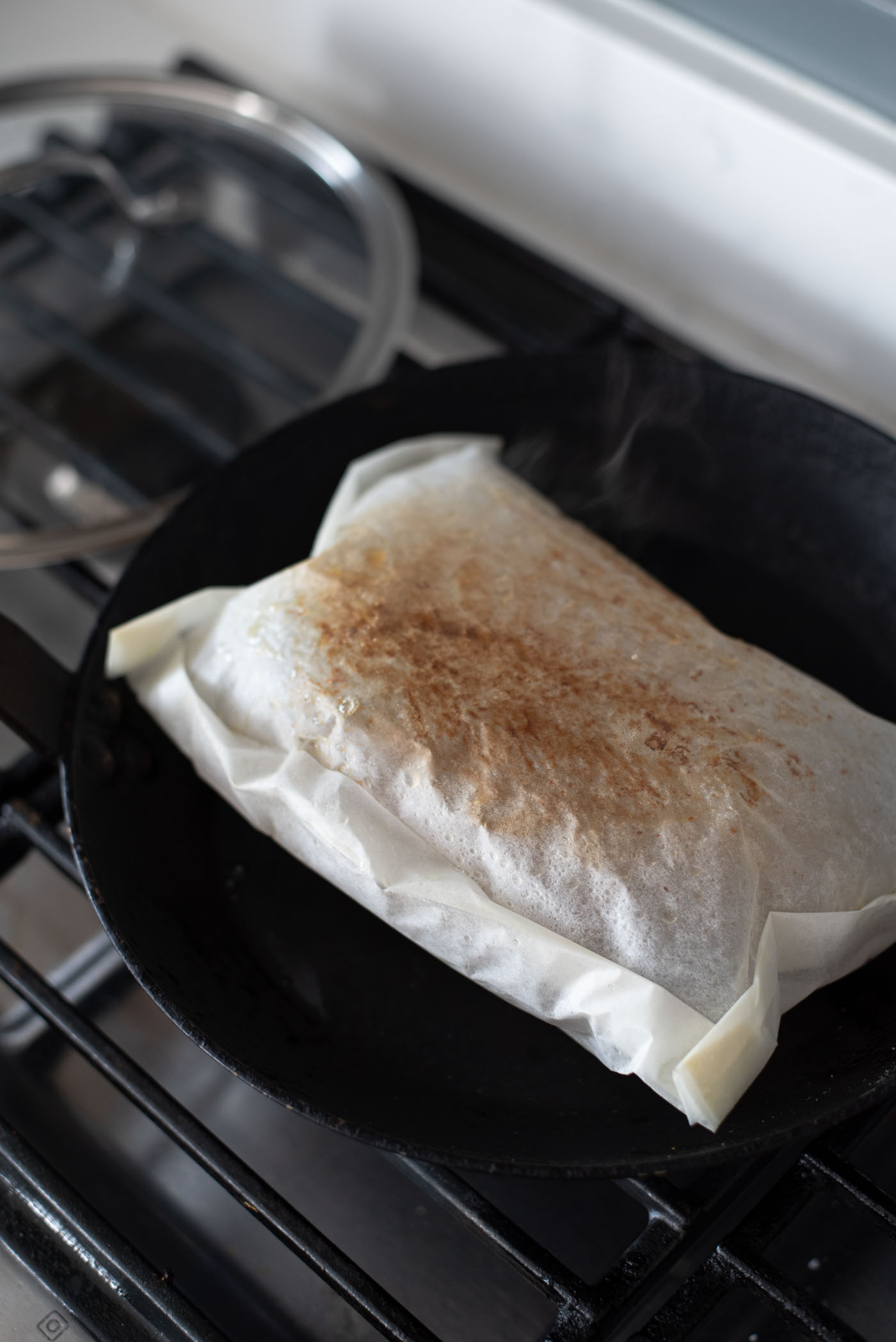

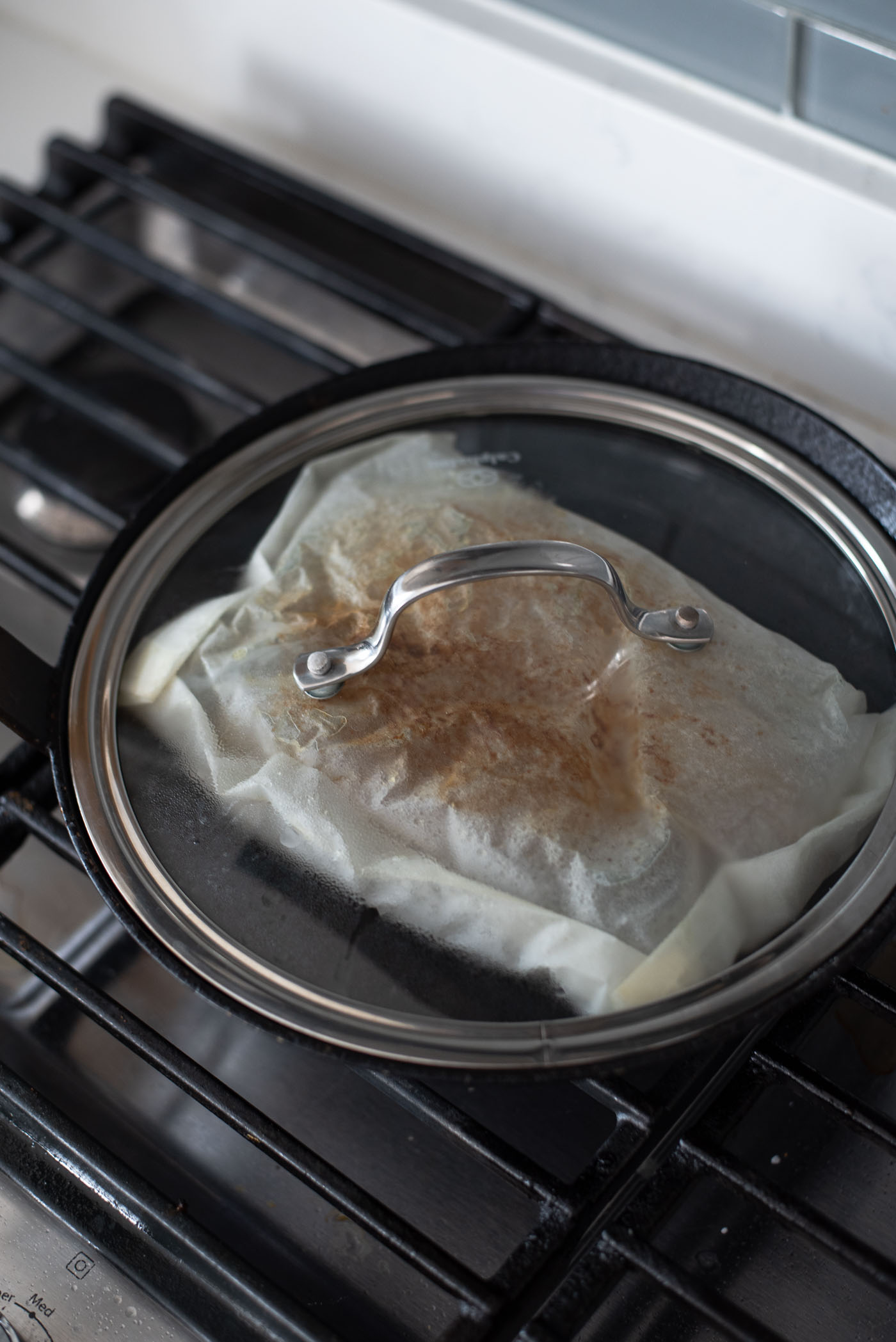

- You should see the bottom side of parchment paper showing golden brown. Cover and continue to cook for another 6-7 minutes over medium low heat.
- Open the pouch carefully using scissors and let the steam escape.
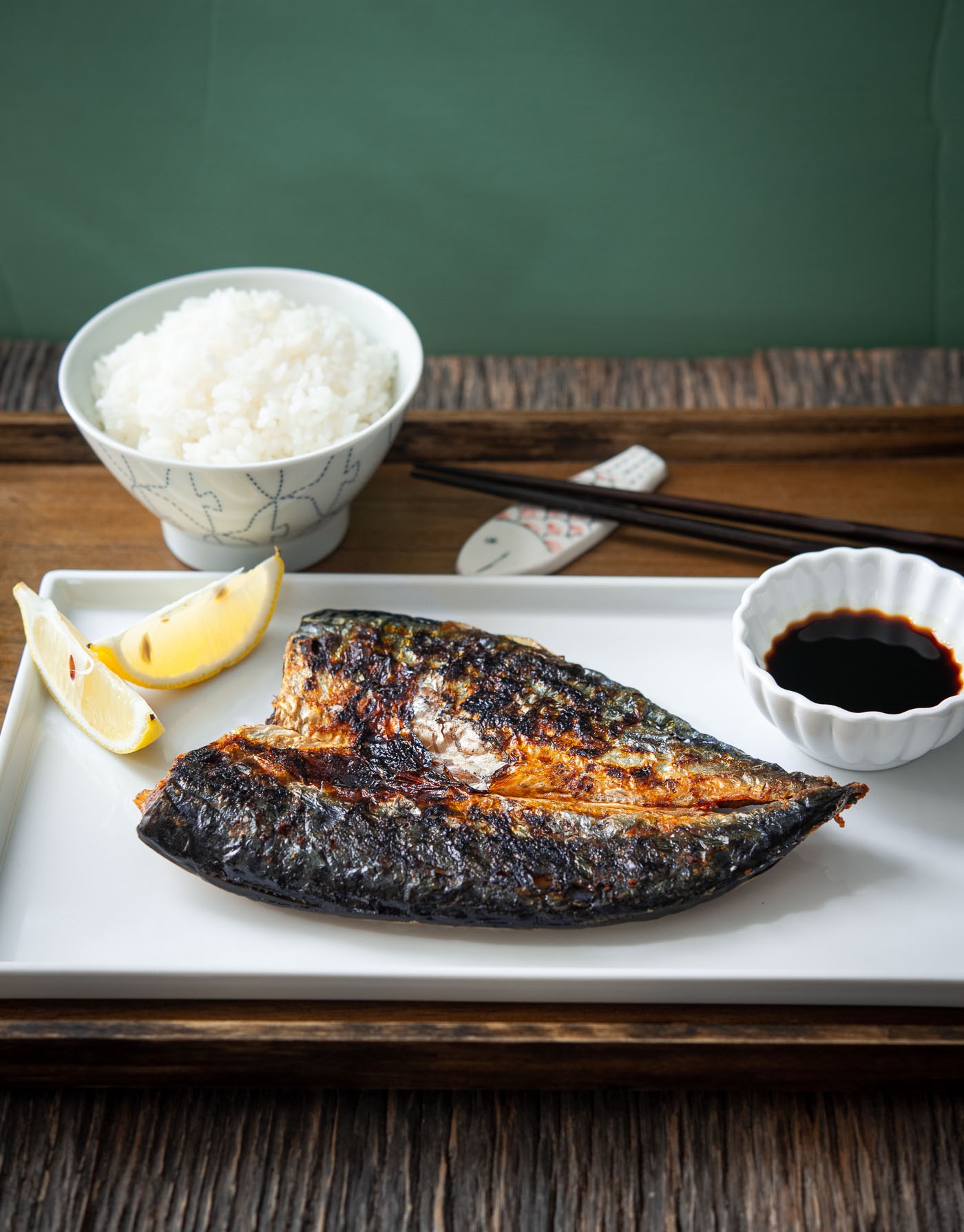

What to Eat with Korean Grilled Mackerel
Serve with lemon wedges, soy sauce, and rice. Squeeze lemon over the fish before dipping in soy sauce. In Korea, it’s commonly paired with Kimchi Stew or Soybean Paste Stew.
Side dishes to go with grilled fish:
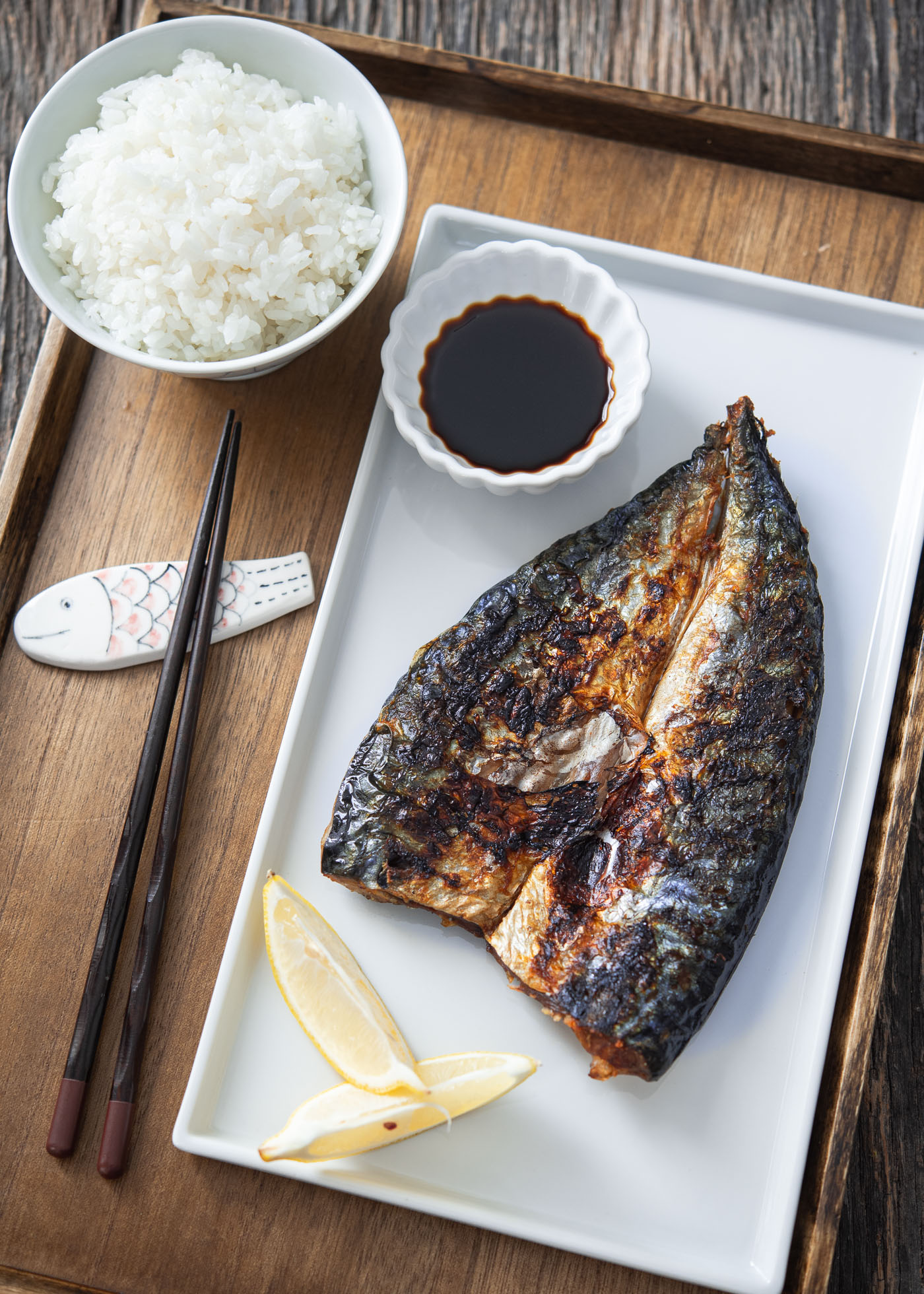

FAQs
What does mackerel fish taste like?
Mackerel has a rich, pronounced flavor with a slightly smoky undertone. It’s an oily fish, which gives it a moist texture, and its taste is considered stronger than that of many other fish. The freshness of the fish plays a significant role in its flavor, with fresher mackerel tasting milder and less “fishy.”
Is Mackerel fish high in mercury?
Mackerel can vary in mercury levels depending on the type. Atlantic and smaller mackerel species generally have low mercury levels, making them safe to eat regularly. However, King mackerel is high in mercury and should be consumed sparingly.
What is an alternative to mackerel?
If you’re looking for fish with a similar texture and flavor profile, sardines or herring are good alternatives. For those seeking other oily fish rich in omega-3s, salmon, trout, and mackerel pike can also serve as alternatives.
How can you cook mackerel without parchment paper?
If you don’t have parchment paper, there are several other methods to cook:
- Grilling: You can grill the fish directly on a barbecue or stovetop grill pan. Ensure the fish is well-oiled to prevent sticking.
- Baking: Place the fish in an oven-safe dish and bake in a preheated oven. You can use aluminum foil as an alternative to parchment paper, but make sure to oil the side touching the fish to prevent sticking.
- Pan-frying: Use a non-stick or well-seasoned skillet to pan-fry mackerel fillets until they’re golden and cooked through.
More Mackerel Recipes
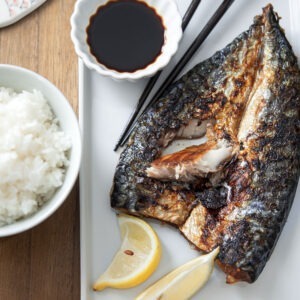

Korean Grilled Mackerel in Parchment
Korean-style grilled mackerel has smoky, crispy skin and juicy flesh. The parchment paper method eliminates unwanted fish odors.
- 1 mackerel fish, filleted, salted if available or use fresh
- 2 cup (240 ml) rice water
- 1 tsp white vinegar
- 2 tsp oil
-
If using an already salted mackerel fish, soak it in rice water for 10 minutes to reduce some of the saltiness. If using fresh fish, soak for 5 minutes or skip this step.
-
Take the fish out of the water and dry completely with a paper towel. Apply a thin coat of vinegar on both sides of the mackerel flesh and skin.
-
Brush a piece of parchment paper with some oil. Place the mackerel fillet in the parchment paper and fold it over the fish. Fold the sides of paper twice to make a pouch and seal the fish inside.
-
Place the pouch, folded side down, in a large pan over medium low heat and cover with a lid, cook for 6-7 minutes. When you see the pouch is puffing high, turn the pouch to the other side and cover. Continue to cook for another 5-6 minutes.
-
Open the pouch carefully using scissors and let the steam escape. Place the grilled mackerel on a serving plate with lemon wedges and soy sauce for dipping. When ready to serve, squeeze the lemon over the fish. Take a piece of fish and dip it lightly in the soy sauce. Serve with rice.
- Firm Flesh: The flesh should be firm and should spring back when pressed gently.
- Clean, Shimmering Skin: Look for mackerel with clean and gleaming skin, free from any blemishes or discolorations.
- Bright Eyes: Fresh mackerel should have clear, bright eyes. Avoid those with cloudy or sunken eyes.
- Retain the Skin: When getting your mackerel cleaned and filleted, ask the butcher to keep the skin on. The skin helps maintain moisture during cooking and contributes to the smoky flavor.
Calories: 362kcal, Carbohydrates: 1g, Protein: 46g, Fat: 18g, Saturated Fat: 5g, Polyunsaturated Fat: 4g, Monounsaturated Fat: 6g, Trans Fat: 1g, Cholesterol: 106mg, Sodium: 696mg, Potassium: 933mg, Fiber: 1g, Sugar: 1g, Vitamin A: 140IU, Vitamin C: 5mg, Calcium: 54mg, Iron: 3mg

